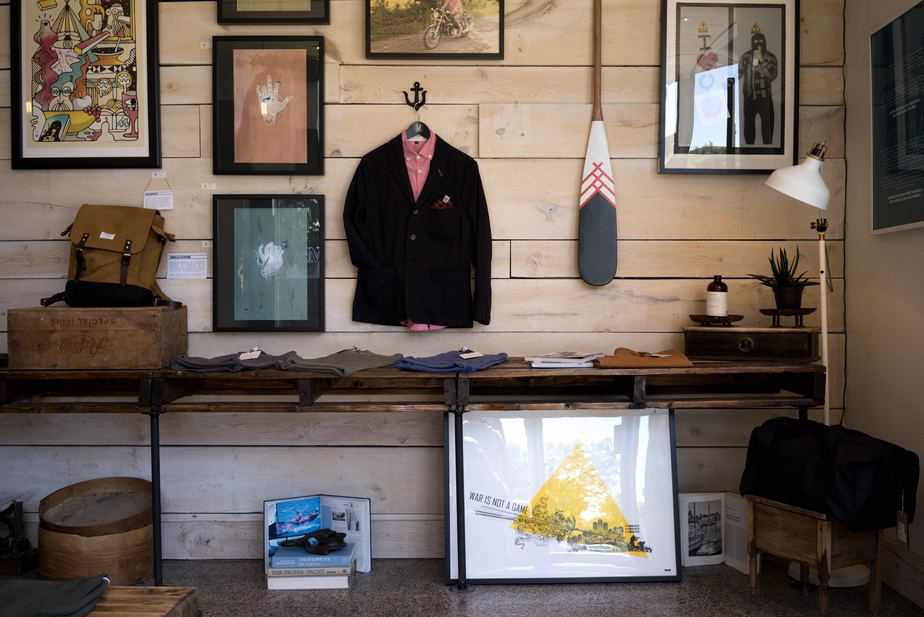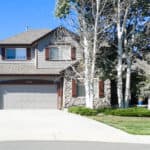A List Of Over 141 Common Painting Terms
Like any specialty there a comes lingo that they each use. This list guide is here to help you get a grasp on the most common painting terms you’ll hear.
- ABRASION RESISTANCE: Resistance to being worn away by rubbing or friction; related more to toughness than to hardness. A necessary quality for floor finishes, enamels, and varnishes.
- ABRASIVE: Used for wearing away a surface by rubbing. Examples are powdered pumice, rottenstone, sandpaper, sandpaper, steel wool.
- ADHESION: The ability of a coating to stick to a surface.
- AEROSOL: A product feature that uses compressed gas to spray the product from its container.
- AIRLESS SPRAY: A spray that increases the fluid pressure of paint by means of a pump that causes atomization with air, resulting in higher film build and little or no over-spray.
- ANCHORING: Mechanical bonding of a coating to a rough surface as contrasted with adhesion, which is chemical bonding.
- ANTI-CORROSIVE PAINT: Metal paint designed to inhibit corrosion. Applied directly to metal.
- BLEEDING: Undercoat staining through the topcoat.
- BLISTERING: The formation of bubbles or pimples on the painted surface caused by moisture in the wood by painting before the previous coat has dried thoroughly or by excessive heat or grease under the paint.
- BLUSHING: A gloss film turning flat or a clear lacquer turning white, usually caused by moisture condensation during the drying process.
- BODY: The thickness or thinness of a liquid paint.
- BREATHE: The ability of a paint film to permit the passage of moisture vapor without causing blistering, cracking, or peeling.
- BRIDGING: Ability of paint to span small gaps or cracks through its cohesion and elastic qualities.
- BUBBLES: Air bubbles in a drying paint film caused by excessive brushing during application or by over-vigorous mixing that results in air treatment.
- BUILD: Thickness or depth of a paint film.
- CATALYST: An ingredient that speeds up a chemical reaction; sometimes used in two-component paint systems.
- CAULKING COMPOUND: A semi-drying or slow drying plastic material used to seal joints or fill crevices around windows, chimneys.
- CHECKING: A kind of paint failure in which many small cracks appear on the surface of the paint.
- CLEAR COATING: A transparent protective and/or decorative film.
- COALESCING: The settling or drying of an emulsion paint as the water evaporates.
- COATING: paint, varnish, lacquer or other finish used to create a protective and/or decorative layer.
- CHECKING: A kind of paint failure in which many small cracks appear on the surface of the paint.
- CLEAR COATING: A transparent protective and/or decorative film.
- COALESCING: The settling or drying of an emulsion paint as the water evaporates.
- COATING: paint, varnish, lacquer or other finish used to create a protective and/or decorative layer.
- COHESION: Attraction of molecules within a coating (how it holds together).
- COLORANT: a Concentrated color that can be added to paints to make a specific color. Proper color of a diamond.
- COVERAGE: The area over which a given amount of paint will spread and hide the previous surface. (Usually expressed in square feet per gallon).
- CRACKING: The type of paint failure characterized by breaks in irregular lines wide enough to expose the underlying surface.
- CRAWLING: Varnish defect in which poor adhesion of varnish to surface in some spots causes it to gather up in globs.
- CRAZING: Small, interlacing cracks on the surface of the finish.
- CURING: Final conversion or drying or a coating material.
- CUSTOM COLOR: Special colors made by adding colorant to paint or by intermixing colors, which permits the retailer to match a color selected by the consumer.
- DRY TACK FREE: That stage of drying when the paint no longer feels sticky or tacky when lightly touched.
- DRY TO HANDLE: That stage of drying when a paint film has hardened sufficiently so the object or surface painted may be used without marring.
- DRY TO RECOAT: That stage of drying when the next coat can be applied.
- DRY TO SAND: That stage of drying when a paint film can be sanded without the sandpaper sticking or clogging.
- DURABILITY: The ability of paint to last or hold up well against the destructive agents such as weather, sunlight, detergents, air pollution, abrasion or marring.
- EGGSHELL FINISH: The degree of gloss between a flat and gloss finish.
- EMULSION PAINT: Paint in which particles are suspended in water or oil with the aid of an emulsifier as in latex paint.
- ENAMEL: Broad classification paints that dry to a hard finish. They may be flat, gloss or semi-gloss.
- EPOXY: Clear finish having excellent adhesion qualities; extremely abrasion and chemical resistant. Epoxies are alcohol proof and very water-resistant.
- EROSION: The wearing away of a paint film caused by exposure to the weather.
- ETCH: Surface preparation by chemical means to improve the adhesion of coating.
- EXTERIOR: The outside surfaces of a structure.
- FADING: The loss of color due to exposure to light, heat or weathering.
- FEATHER SANDING: Tapering the edge of dried paint film with sandpaper.
- FILLER: A product used to fill the pores of wood before applying a prime of the finish coat.
- FILM: Layer or coat of paint or other finish.
- FINISH COAT: Last coat of paint or other finish.
- FLAKING: A form of paint failure characterized by the detachment of small pieces of the film from the surface of previous coat of paint. Cracking or blistering usually precedes it.
- FLASHPOINT: The temperature at which a coating or solvent will ignite.
- FLAT: A paint surface that scatters or absorbs the light falling on it so as to be substantially free from gloss or sheen.
- FLEXIBILITY: Ability of a coating to expand and contract during temperature changes.
- FLOATING: Separation of pigment colors on the surface of the applied paint.
- FLOW: The ability of a coating to level out and spread into a smooth film, paints that have a good flow usually level out uniformly and exhibit few brush or roller marks.
- GALVANIZED: A thin coating of zinc that covers iron or steel to prevent rust.
- GLAZE: A term used to describe several types of finishing materials. (1) Glazing putty is of a creamy consistency and is applied to fill imperfections in the surface. (2) A glazing stain is a pigmented stain applied to a stained, filled or painted surface to soften or blend the original color without obscuring it. (3) A glaze coat is a clear finish applied to previously coated surfaces to create a gloss finish.
- GLOSS: The luster or shininess of paints and coatings are generally classified as flat, semi-gloss, or gloss; the latter has the higher reflecting ability.
- GLOSS METER: A standard scale for measuring the shininess or light reflectance of paint. Different brands with the same description such as semi-gloss or flat may have quite different ratings on the gloss meter.
- HARDNESS: The ability of a paint film to resist denting, scratching or marring.
- HIDING POWER: The ability of a paint to hide the previous surface or color.
- HOLIDAYS: Voids in the dried paint film.
- LACQUER: A fast-drying clear pigmented coating that dries by solvent evaporation.
- LATEX: A water-thinned paint, such as a polyvinyl acetate, styrene butadiene or acrylic.
- LEVELING: Ability of a film to flow out free from ripples, pockmarks, and brush marks after application.
- LIFTING: The softening and penetration of a previous film by solvents in the paint being applied over it, resulting in raising and wrinkling.
- MARINE VARNISH: Varnish specially designed for immersion in water and exposure to marine atmosphere.
- MASKING: Temporary covering of areas not to be painted.
- MASKING TAPE: A strip of paper or cloth similar to adhesive tape, which can be easily removed, used to temporarily cover areas that are not to be painted.
- METALLICS: A class of paints that include metal flakes in their composition.
- MILDEW RESISTANCE: The ability of a coating to resist the growth of molds and mildew. Mildew is particularly prevalent in moist, humid and warm climates.
- OPACITY: The ability of a paint to hide the previous surface or color.
- OPAQUE COATING: A coating that hides the previous surface coating.
- ORANGE PEEL: Film having the roughness of an orange due to a poor roller or spray application.
- PAINT GAUGE: Instrument for measuring the thickness of paint film.
- PAINT REMOVER: A compound that softens old paint or varnish and permits scraping off the loosened material.
- PEELING: Detachment of a dried paint film in relatively large pieces, usually caused by moisture or grease under the painted surface.
- PIGMENTS: Paint ingredients mainly used to impart color and hiding power.
- PINHOLE: Very small holes in the paint film, usually not deep enough to show undercoat.
- POLYURETHANE: Wide range of coatings, ranging from hard gloss enamels to soft flexible coatings. Good to very good adhesion, hardness, flexibility, and resistance. Surface preparation critical.
- POT LIFE: Amount of time after mixing a two-part paint system during which it can be applied.
- PRIME COAT OR PRIMER: The first coat or undercoat that helps bind the topcoat to the substrate.
- PROPELLANT: The gas used to expel materials from aerosol containers.
- REMOVERS: Substances used to soften old varnish or paint so they may be removed easily.
- RESIN: A natural or synthetic material that is the main ingredient of paint and that binds ingredients together. It also aids adhesion to the surface.
- RUNS: Blemished film caused by an excessive flow of coating.
- RUST PREVENTATIVE PAINT OR PRIMER: The first coat of paint applied directly to iron or steel structures to slow down or prevent rust.
- SAGS: Excessive flow, causing runs or sagging in paint film during application. Usually caused by applying too heavy a coat of paint or thinning too much.
- SANDING SURFACES: A heavily pigmented finishing material used for building the surface to a smooth condition. It is sanded after drying.
- SATIN FINISH: See Semi-Gloss
- SEALER: A thin liquid applied to seal a surface, to prevent previous paint from bleeding through from the surface or to prevent undue absorption of the topcoat into the substrate.
- SEEDS: Small, undesirable particles or granules other than dust found in paint, varnish or lacquer.
- SEMI-GLOSS: Having a luster between full and flat.
- SEMI-TRANSPARENT: A degree of hiding greater than transparent but less than opaque.
- SETTLING: Paint separation in which pigments accumulate at the bottom of the container.
- SET UP: A film that has dried so that it is firm is said to have “set up”.
- SHAKE PAINTER: A rectangular-shaped flat pad with an attached handle that is used to paint shingles, shakes and other special surfaces and areas.
- SHEEN: The degree of luster of a dried paint film.
- SHEEN UNIFORMITY: The even distribution of luster over the entire surface of an applied finish.
- SHELLAC: Derived from a resinous substance called Lac. Used as a sealer and finish for floors, for sealing knots and other purposes. A natural resin, usually in the form of thin flakes.
- SILICONE: See Resin.
- SKIN: Tough covering that forms on paints if the container is not tightly sealed.
- SOLIDS: See Nonvolatile.
- SOLVENT: The volatile part of paint composition that evaporates during drying.
- SPACKLING COMPOUND: A material used as crack filler for preparing surfaces before painting.
- SPATTER: Small particles or drips of liquid paint thrown or expelled when applying paint.
- SPOT PRIMING: A method of protecting localized spots. The only areas primed are those that require additional protection due to rusting or peeling of the former coat.
- SPRAYING: A method of application in which the coating material is broken up into a fine mist that is directed onto the surface to be coated.
- SPREADING RATE: The area to which paint can be spread; usually expressed as square feet per gallon.
- STAIN: A solution or suspension of coloring matter in a vehicle designed primarily to be applied to create color effects rather than to form a protective coating. A transparent or semi-opaque coating that colors without completely obscuring the grain of the surface.
- STREAKING: The irregular occurrence of lines or streaks of various lengths and colors in an applied film; usually caused by some form of contamination.
- STRIP: Removal of old finishes with paint removers.
- STYRENE-BUTADIENE: See Resin.
- SUBSTRATE: Surface to be painted.
- SURFACE TENSION: The property of a coating that makes it tend to shrink when applied.
- TACKY: the Sticky condition of a coating during drying, between wet and dry-to-touch stage.
- TEXTURE: The roughness or irregularity of a surface.
- TEXTURE PAINT: Paint that can be manipulated by brush, roller, trowel or other tools to produce various effects.
- THINNERS: Solvents used in thin coatings.
- THIXOTROPY: The property of a material that causes it to change from a thick, pasty consistency to a fluid consistency upon agitation, brushing or rolling.
- TINT BASE: The basic paint in a custom color system to which colorants are added.
- TONER: Pigmented lacquer sealer that is applied by spray. Toners provide color and make the surface appear evener.
- TOUCH UP: The ability of a coating film to be spot repaired (usually within a few months of initial painting) without showing color or gloss differences.
- TURPENTINE: A colorless liquid, which is used as a thinner for oil paints and varnishes, distilled from the products of the pine tree.
- UNDERCOAT: A primer or intermediate coating before the finish coating.
- VARNISH: a Transparent liquid that dries on exposure to air to give a decorative and protective and protective coating when applied as a thin film.
- VARNISH STAIN: Varnishes colored with a dye and without the same power of penetrations as the true stains, leaving a colored coating on the surface.
- VEHICLE: The liquid portion of paint composed mainly of solvents, resins or oils.
- VINYL: A resin with poor adhesion but good hardness, flexibility, and resistance. Used for swimming pools, tank linings, and marine equipment.
- VISCOSITY: The thickness of a coating as related to its ability to flow as a liquid.
- WASHABILITY: The ability of a paint to be easily cleaned without wearing away during cleaning.
- WATER EMULSIONS: Mixture of pigment and synthetic resin in water with low solvent emission, low fire hazard and toxicity and good durability and chemical resistance.
- WATER SPOTTING: A paint appearance defect caused by water droplets.
- WEATHERING: The effect of exposure to weather on paint films.
- WET EDGE: Length of time a wall paint can stand and be brushed back into the next stretch without showing a lap.
- WITHERING: Withering a loss of gloss is sometimes caused by varnishing open-pore woods without filling pores, use of improper undercoating or applying a top coat before undercoat has dried.
- WRINKLING: Development of ridges and furrows in a paint film when the paint dries.
- YELLOWING: Development of a yellow color or cast in white, a pastel, colored or clear finishes.
- ZINC CHROMATE: Rust-inhibiting pigment, greenish-yellow in color that is used with a high-hiding pigment.
- ZINC OXIDE: Substance used as a white pigment for high-hiding power hardness and gloss. Reduces yellowing, increases drying; provides resistance to sulfur fumes and mildew. Used with linseed oil for self-cleaning exterior paints.
[wd_hustle id=”small-lead-gen-form-1″ type=”embedded”]











No Comments
Sorry, the comment form is closed at this time.